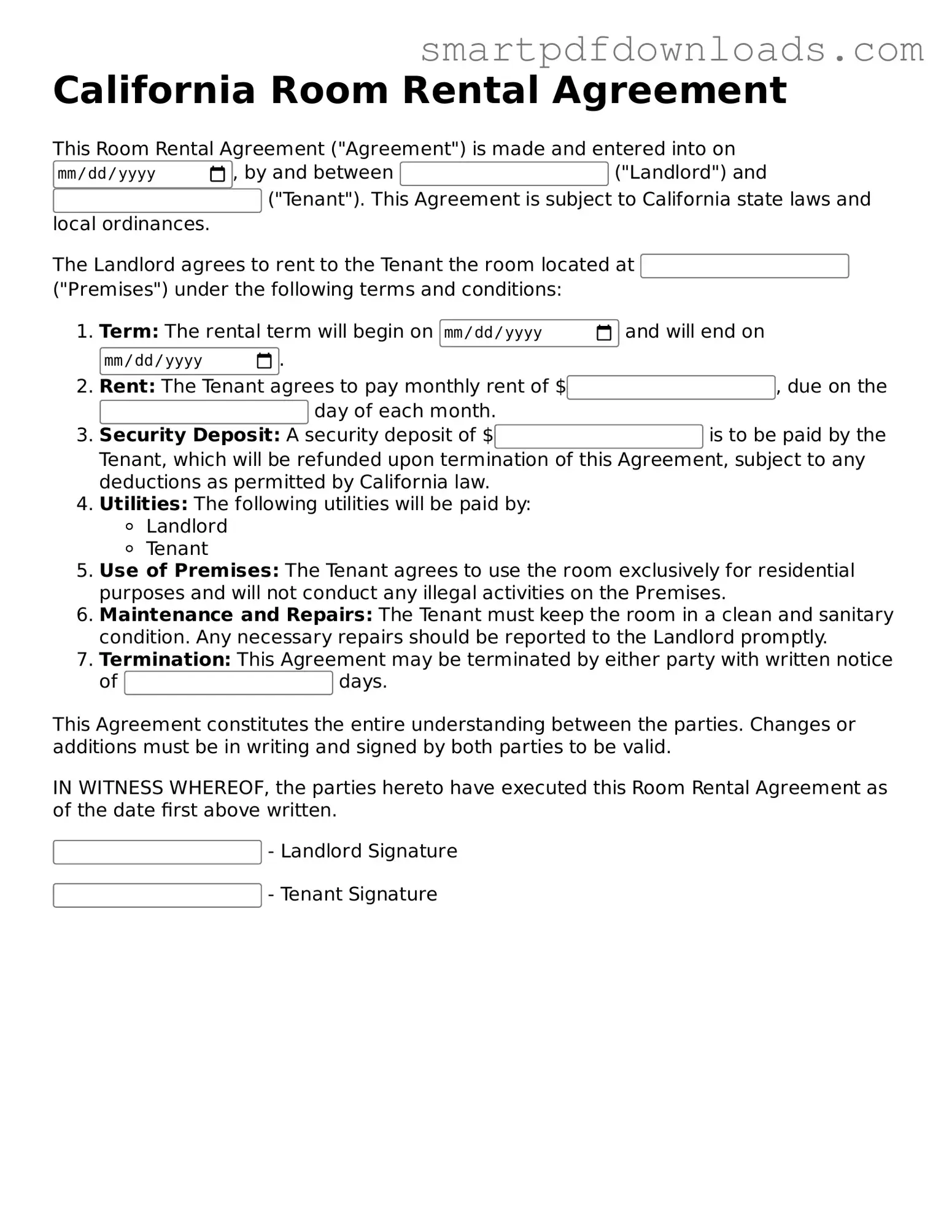Legal Room Rental Agreement Form for the State of California
The California Room Rental Agreement form is a legal document that outlines the terms and conditions between a landlord and a tenant for renting a room in a residential property. This agreement serves to protect the rights of both parties and ensures clarity regarding payment, responsibilities, and other essential details. Understanding this form is crucial for anyone looking to rent or lease a room in California.
Edit Room Rental Agreement Online
